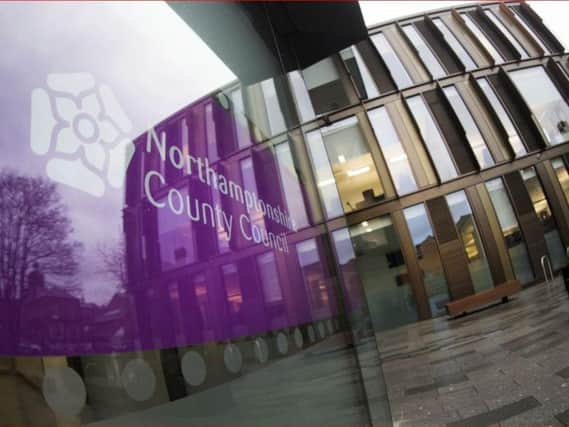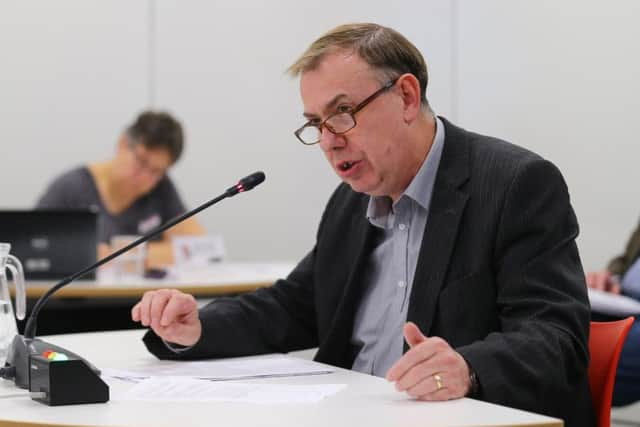How have things changed one year on from scrutiny overhaul at Northamptonshire County Council?


Effectively going bankrupt twice within a few months, the daggers were being drawn and the blame game was picking up speed. Chief executives, senior officers, leaders and cabinet members both past and present were all accused of running the council down.
But a closer look behind the millions of pounds worth of deficit revealed that a lack of scrutiny on decisions being made at the top had played a big part. Not that head brass had made it easy in the past for councillors to carry that out.
Advertisement
Hide AdAdvertisement
Hide Ad“The inspection team was struck by the number of councillors who told us that they had been refused information when they sought to ask questions,” writes government inspector Max Caller in March 2018.


“Councillors told us that they felt if they asked difficult questions at audit committee or scrutiny meetings they would be replaced and there was some evidence to support this.
“The council did not respond well, or in many cases even react to external and internal criticism. Individual councillors appear to have been denied answers to questions that were entirely legitimate to ask and scrutiny arrangements were constrained by what was felt the executive would allow.”
It was a culture that needed changing. One year ago the scrutiny process was completely overhauled at the county council. Gone were the individual scrutiny panels, each looking into a different area such as finance, health or children’s services.
Advertisement
Hide AdAdvertisement
Hide AdInstead, a report to full council proposed replacing the five existing scrutiny committees with a single committee. The recommendations resulted from a review of the council’s arrangements by the Centre for Public Scrutiny, which had followed the criticism from Mr Caller.
The move was not without its critics, so how have things changed 12 months down the line?
“There was in the past perhaps a tendency for the work to be ignored by the cabinet and leadership, and I don’t think that is the case anymore,” says Councillor Mick Scrimshaw, the Labour councillor heading up the new committee.
“Over the last year, the reports we have sent in have been listened to. The leadership haven’t always agreed with absolutely everything though, and what I’m trying to do as chairman more than anything is to get the leadership and senior officers to think carefully about the decisions they are about to make and think to themselves ‘what will scrutiny say?’.
Advertisement
Hide AdAdvertisement
Hide Ad“For the last year or so we’ve mainly been looking at the finance, as you would imagine as it is one of the biggest issues facing the county council. So far it has been good, to a degree.
“We’re working in a more relaxed and formal way than scrutiny perhaps used to operate in the past, and certainly there’s now the opportunity for individual councillors to have their say and raise any queries.”
The greatest proportion of the committee’s attention through the year has been given to the budget and children’s services, both of which are still projecting large overspends. Some members have carried out reports on its behalf into social worker recruitment, while an investigation on the Northamptonshire Highway Services contract is still underway.
So how have Conservative councillors viewed the change? Councillor Adam Brown, who sits on the committee, said: “Full council meetings are more like theatre. Overview and scrutiny is more productive.”
Advertisement
Hide AdAdvertisement
Hide AdAnd leader Matt Golby adds: “It’s clear that overview and scrutiny has covered a lot of diverse areas. There’s a much better emphasis on cross party working and I would be happy if one of the legacies of this council going into unitary is now the way it scrutinises.”
The cross-party working appears to be the biggest change according to those involved, with political games being put on the backburner in the nitty-gritty. They’re now being saved for the public gallery and full council at County Hall.
“We’re still learning how to work together as it is made up of politicians from all political parties,” adds Councillor Scrimshaw. “But one of the real strengths has been how people have put aside their party differences and worked across the table. There’s still a long way to go though but there have been improvements and I’ve been pleased with how everyone has got to grips with it.”
With the county council set to be abolished in 2021 however, some may argue it is too little too late. But with each of the respective councils hoping to influence how the new unitary may look, it may be that the once-maligned scrutiny is one part of the county council that is actually passed onto its successor.